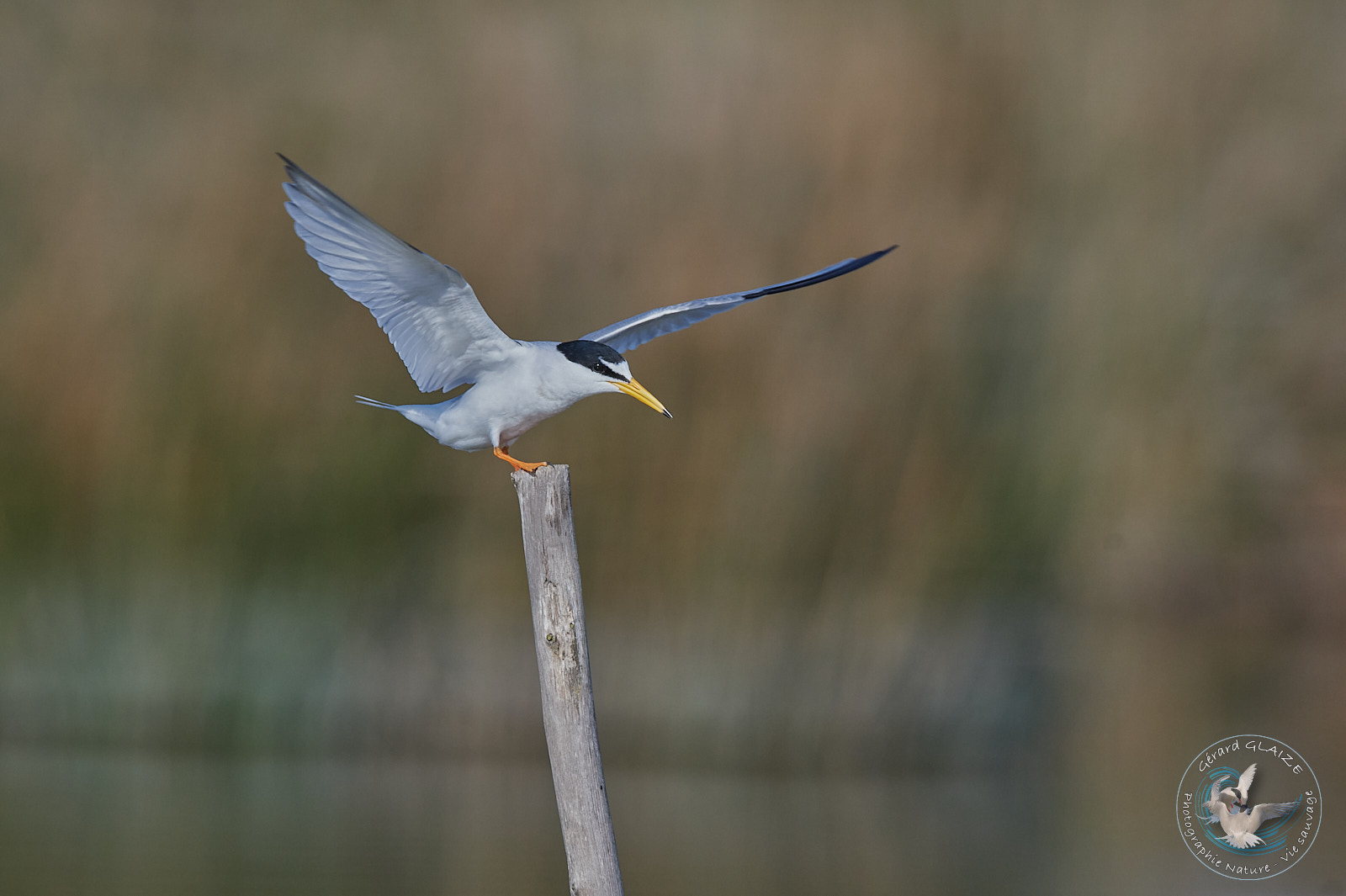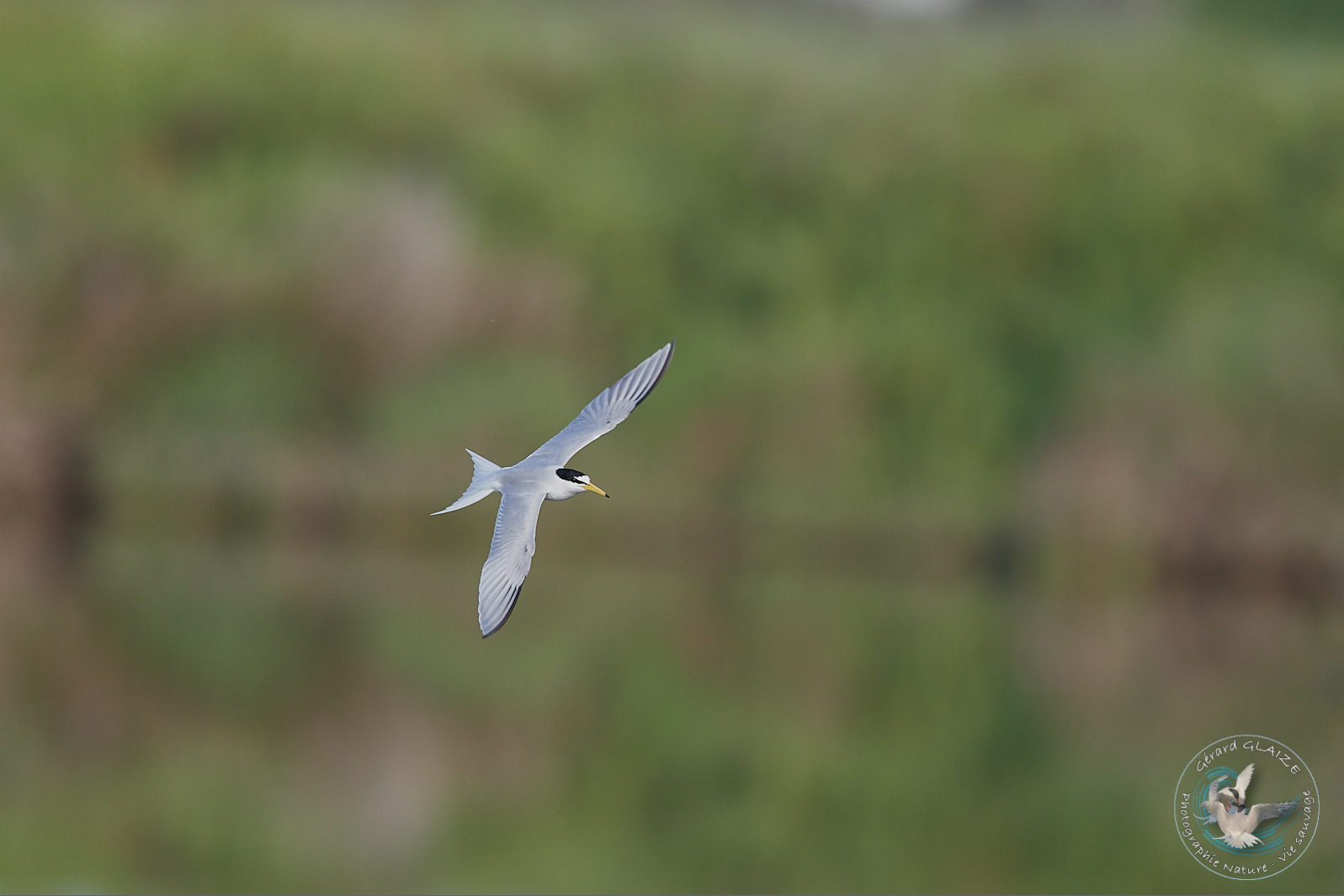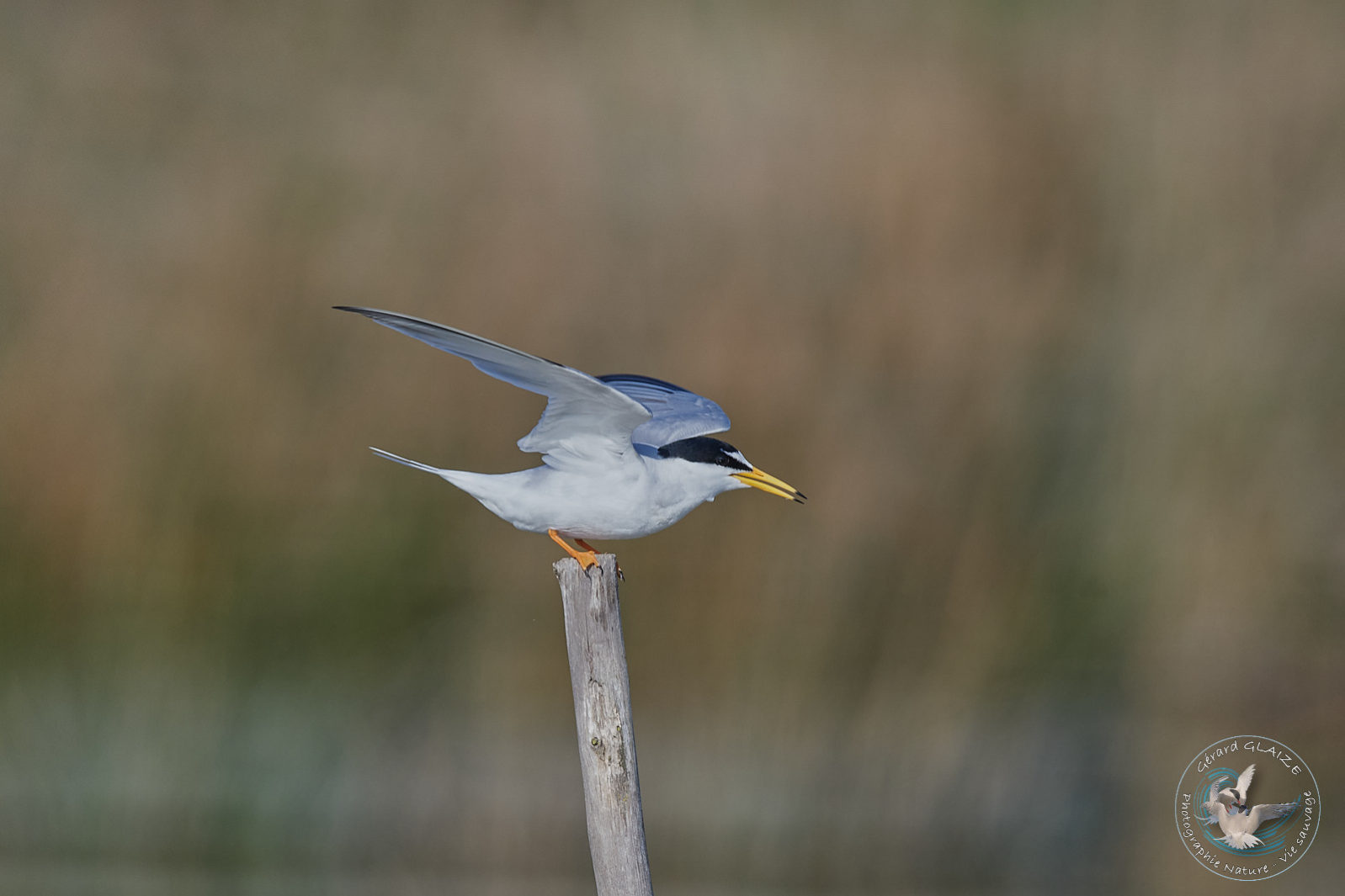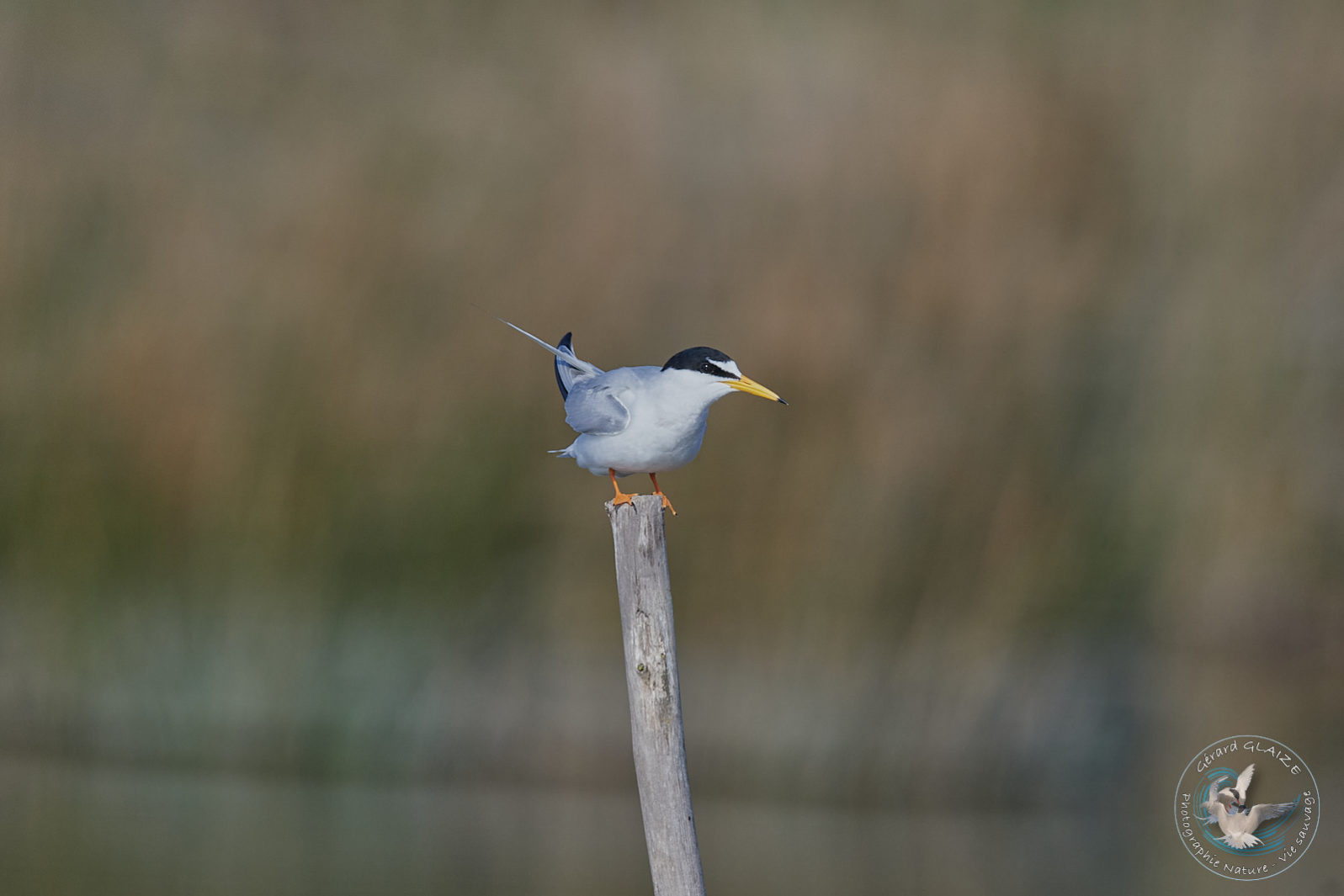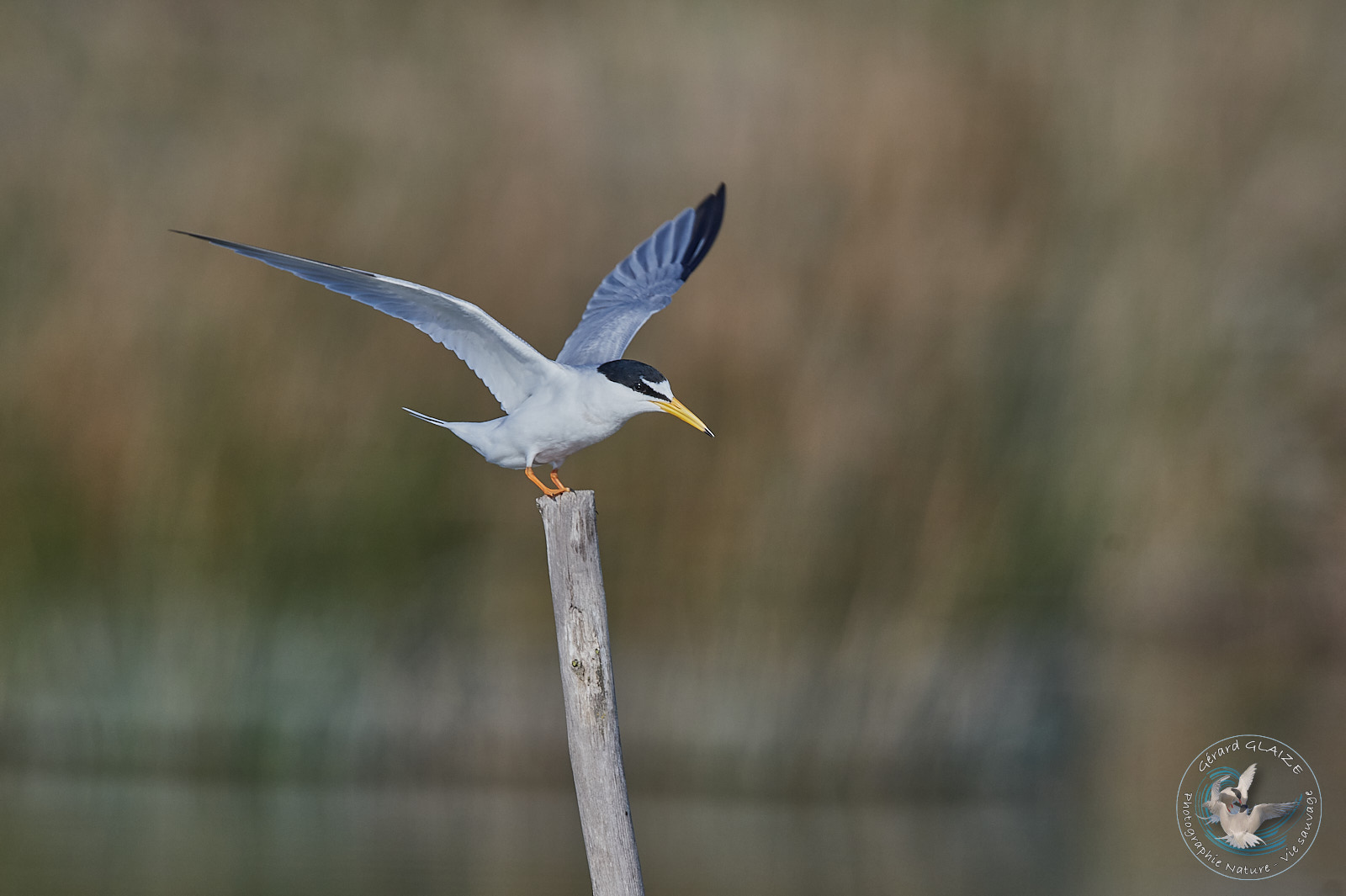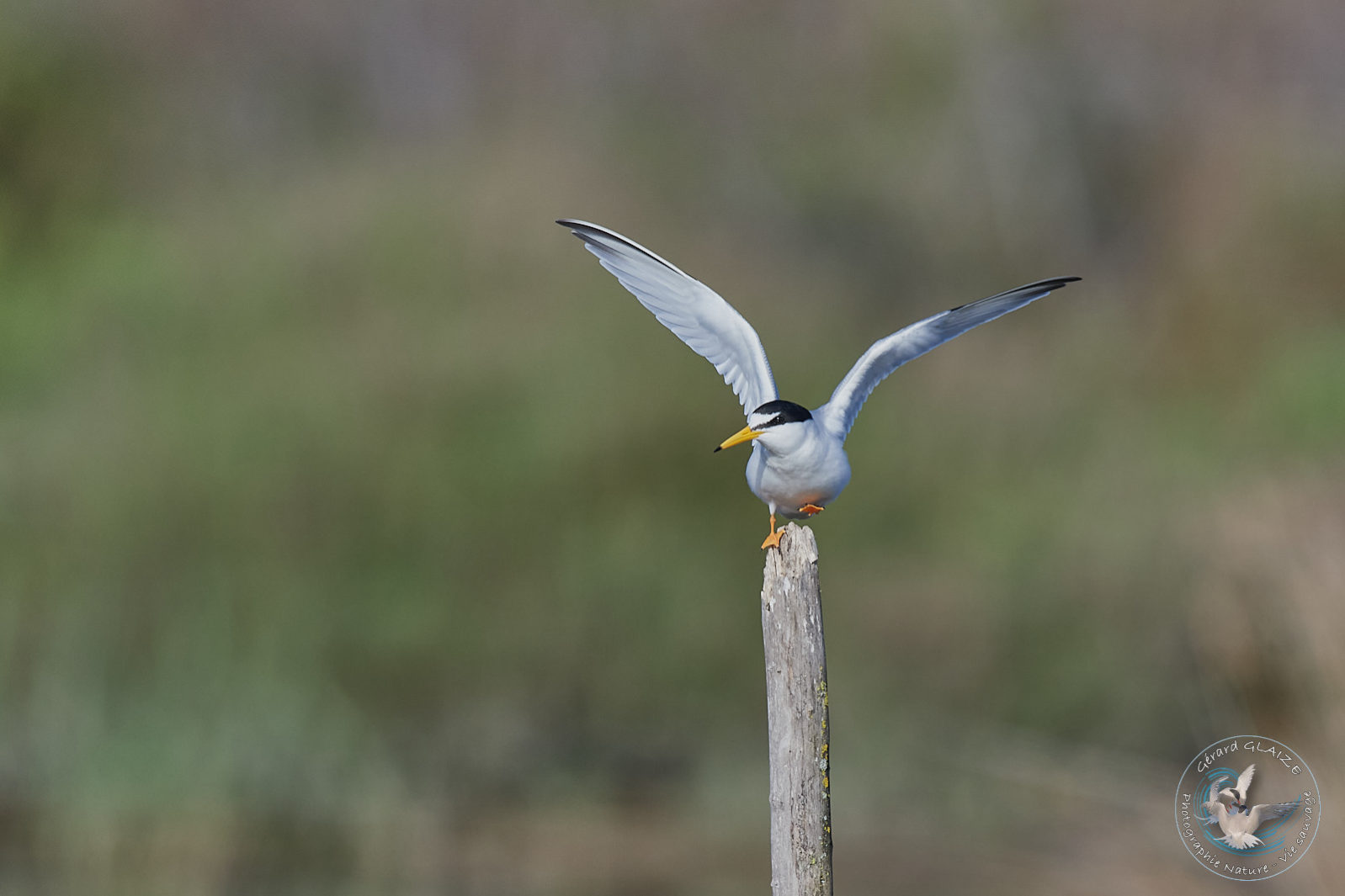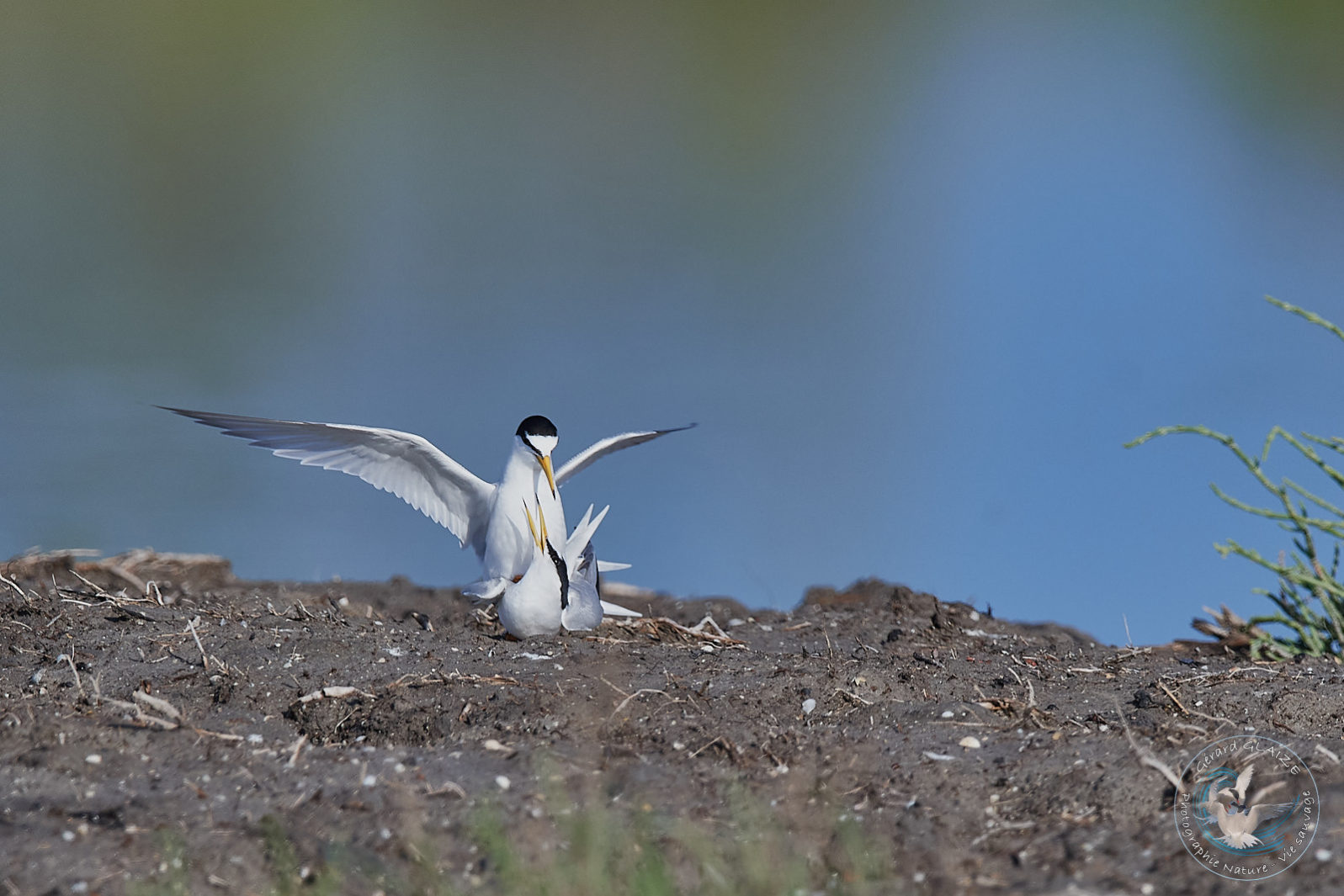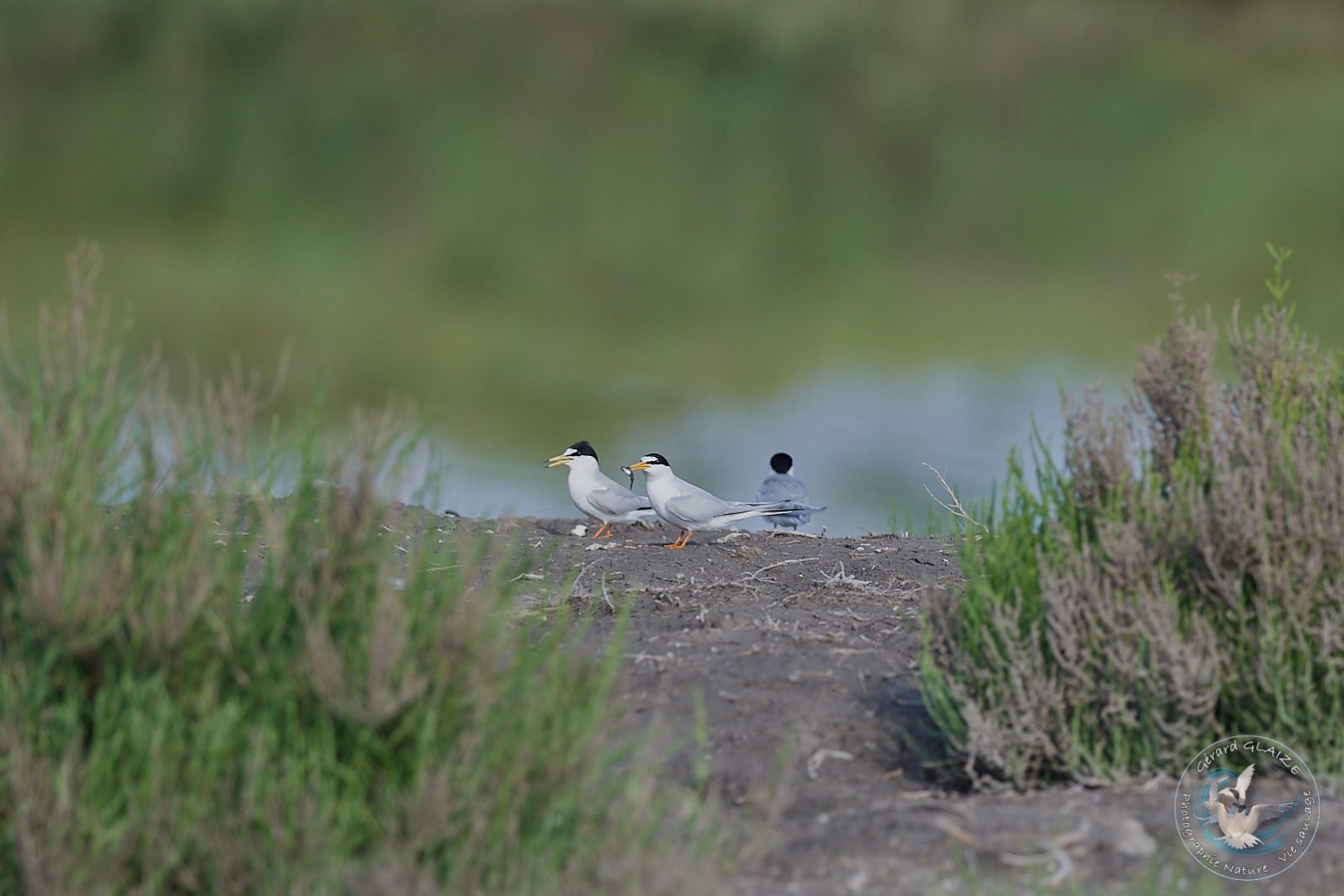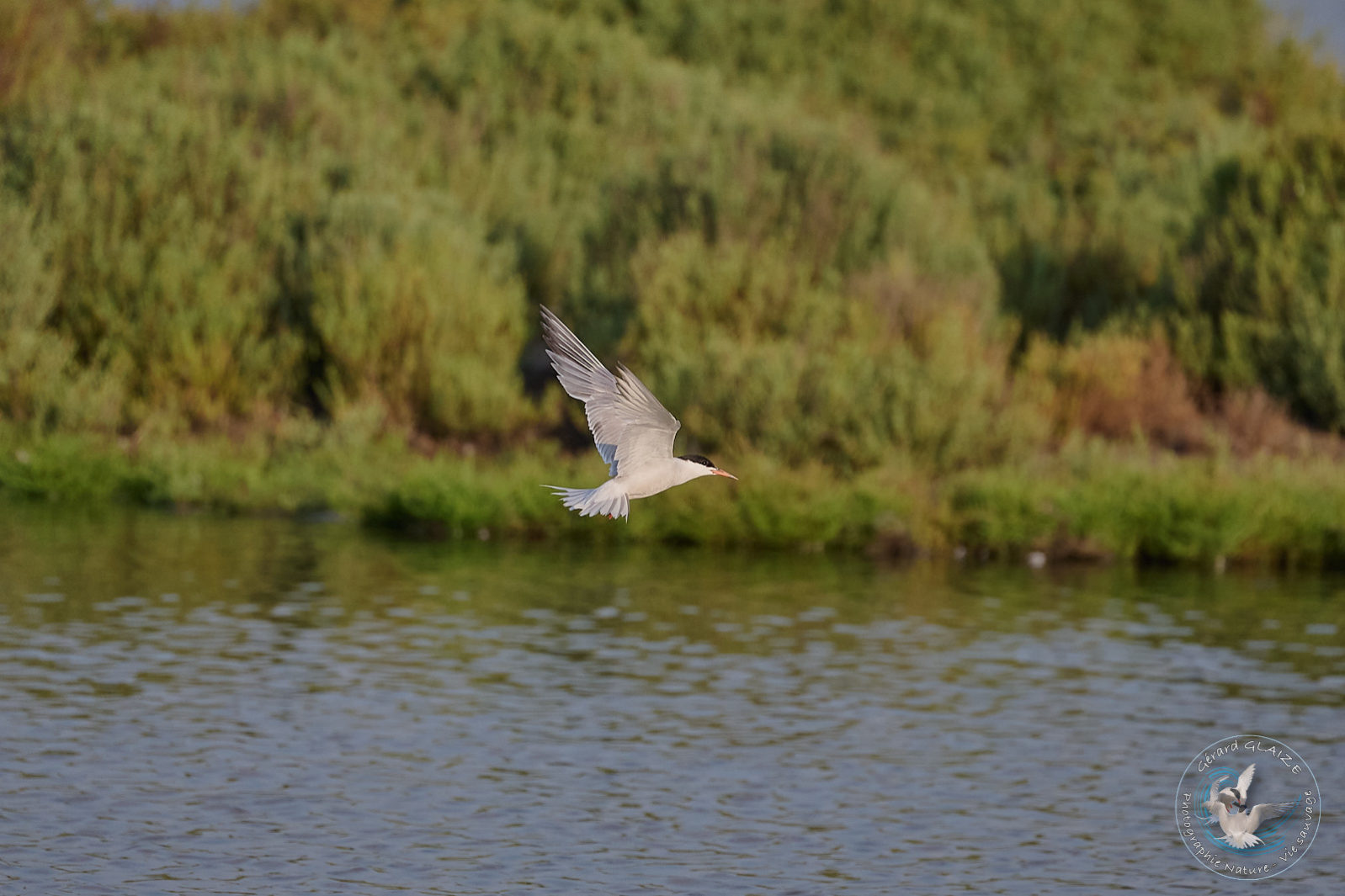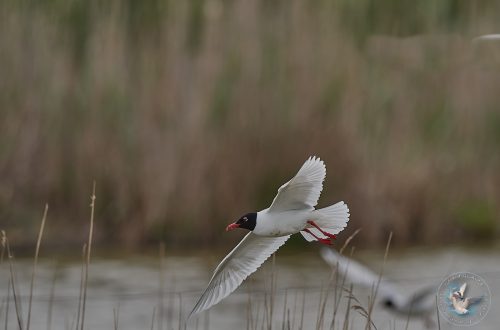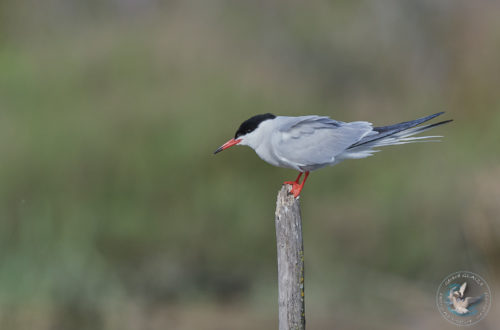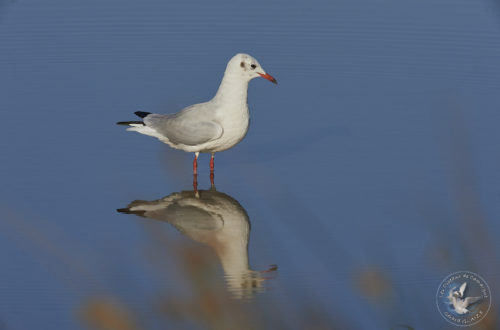Little Tern
It is a small tern recognizable by its yellow beak with black tip, the white forehead which gives it its Latin name (albifrons) and its yellow legs. The outer primaries are blackish. Its tail is short and shakes with jerky movements. Both sexes are similar.
It is the smallest of the European terns. A coastal bird of sandy and pebble beaches, it sometimes ventures inland during migration.
Little Tern
Scientific name : Sternula albifrons
Family : Laridae
Length: from 22 cm to 26 cm – Wingspan: from 47 cm to 55 cm
Weight : from 48 gr to 65 gr
IUCN Conservation Status: LC
Flight
The flight of the little tern is light, rapid and jerky. It is characterized by the rapidity of its wing beats, especially when it hovers while fishing.
Habitat
A coastal bird, the little tern likes sandy beaches as well as the stony banks of rivers. Furthermore, the little tern particularly appreciates islets surrounded by water (salt or not).
Regime – Diet
The Little Tern fishes by diving quickly but lightly. It often hovers before diving into shallow water to capture prey, often near the edge, it only frequents ponds and pools. Mainly piscivorous, it feeds primarily on small fish, small crustaceans, insects, and sometimes molluscs.
Nesting
Usually gregarious, the Little Tern nevertheless nests in more or less large colonies on earth or sand banks. The nest is a simple excavation dug in the loose soil (sand, gravel). A single clutch takes place in May-June, it contains 2 to 3 eggs, incubation lasts approximately 22 days, carried out by both parents. The chicks finally fly after 4 weeks.
Migration
The northernmost populations of the distribution therefore migrate along the European coasts to spend the winter along the Atlantic coast, in West Africa. It then leaves us in July-November, the nesters return to the breeding sites at the beginning of April, a little later in the north of France.
Protection
Little Tern populations appear stable for now. However, it has benefited from total protection on French territory since the ministerial decree of April 17, 1981 relating to birds protected throughout the territory. It is listed in Annex I of the Birds Directive of the European Union. It is therefore prohibited to destroy, mutilate, capture or remove it, intentionally disturb it or naturalize it, as well as destroy or remove eggs and nests, and destroy, alter or degrade its environment.
Cry
The calls allow the little tern to be recognized from afar. In particular its high, rapid cry “Kirri-kirri-kirri” is often repeated.


